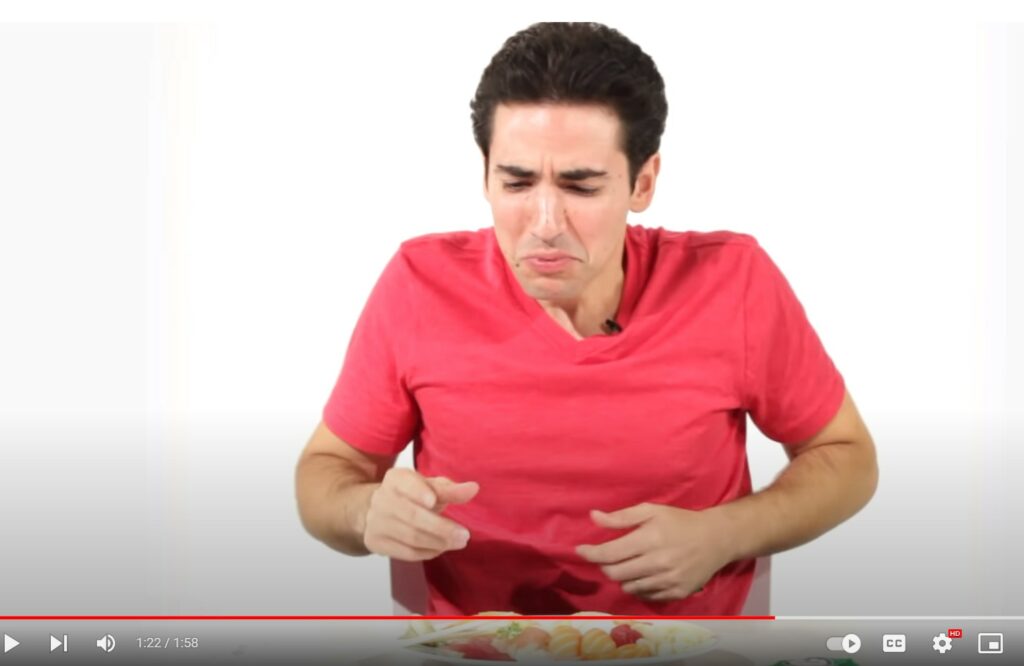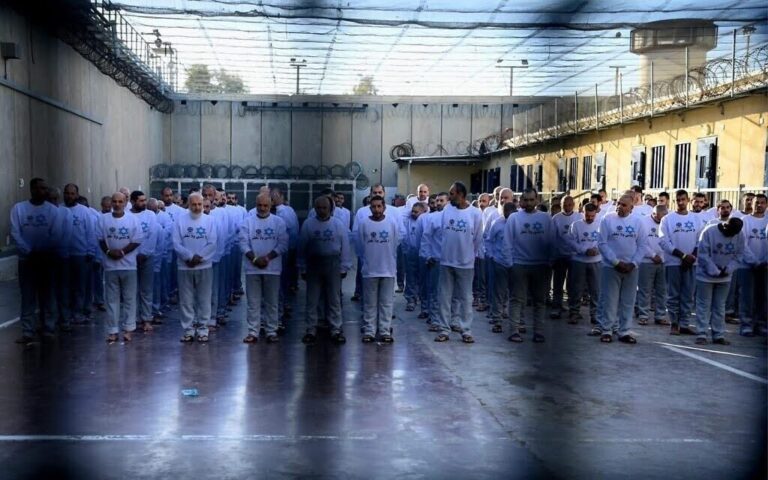By Rabbi Yair Hoffman for 5TJT.com)
Some fulfill it with sushi. But the truth of the matter is that not everyone likes sushi. And, that may not do the trick.
What halachic issue are we talking about?
The Chofetz Chaim writes in his Mishna Brurah (Siman 419:2) that when Rosh Chodesh falls on Shabbos the medakdekim – those that are careful in Mitzvos – add a special dish beyond what one normally does on Shabbos on account of Rosh Chodesh. He cites the Shaarei Knesses haGedolah, the Eliyahu Rabba and the Chayei Odom.
This Shabbos, of course, is Shabbos, Rosh Chodesh, and Chanukah – all in one. And when Rosh Chodesh falls on Shabbos – there is a fascinating yet unresolved halachic question. We know that Rosh Chodesh is a special and festive occasion that symbolizes the renewal of the Jewish people.
ADDITIONS FROM HEAVEN
The Tur (Siman 419) cites a Psikta that states in regard to Rosh Chodesh that if one adds to Rosh Chodesh [in a seudah] then that person receives additions from Heaven.
IS IT JUST ONCE OR FOR ALL THREE MEALS?
The Mishna Brurah, however, is unclear as to whether it should be done just once on Shabbos or for each of the three meals on Shabbos. The question perhaps is predicated upon the notion that Shabbos might be different because there is an obligation for three meals on Shabbos. Whereas, on Rosh Chodesh – there is no obligation of a night meal.
Indeed, the author of the Shmiras Shabbos K’hilchasa (54:footnote 151), Rav Yehoshua Neuwirth zt”l (1927-2013), raises this question and remains with no answer. When Rosh Chodesh falls during the week – it is sufficient just to have extra food during the day meal. But it is not so clear whether this is true for when Rosh Chodesh falls on Shabbos. [As an aside, Rav Neuwirth zt”l was born in Berlin and escaped Nazi Germany on the Kindertransport. Imagine, chalillah, the loss if this wonderful attempt to save children did not exist].
Perhaps as a slight indication that three times is preferable, the Bach writes that on a two day Rosh Chodesh that occurs on Shabbos and Sunday, it would not be sufficient to merely add to the Shabbos meal since it would not be identifiable that it is being done for Rosh Chodesh. On the other hand, the Yaavetz writes that one could just have a larger Melaveh Malka than one is accustomed to have which would indicate the other way.
RAV OVADIAH’S VIEW
Rav Ovadiah Yosef zt”l has a different approach. In Responsa Chazon Ovadiah Vol. I #8, he writes that one can fulfill two mitzvos with the same kezayis. However, the Mishna Brurah clearly indicates that for medakdekim – there should be a recognizable difference – unlike Rav Ovadiah Yoseph’s view. It would seem that this would be a debate between Sefardim and Ashkenazim as to whether even medakdemim should do this or not. For those who follow Rav Ovadiah – there is no need. For those who follow the Mishna Brurah – it should be done.
SUGGESTION
There is an important Gemorah that may weigh in on this question. The Gemara (Beitzah 15b) tells us that money we spend for Shabbos is excluded from the predetermined sum we are destined to make that year. In other words, Hashem covers our Shabbos expenditures. In light of this Gemorah, the Mishna Brurah and the aforementioned Tur – if we can afford it and it won’t cause us to go into debt – it would be worthwhile to add an extra dish or item to each of the three meals.
We see something fascinating from Rav Moshe Chaim Luzzatto’s explanation of honoring Shabbos in his Mesillas Yesharim, chapter 9. He writes that Rav Nachman would contemplate what he would do according to his means to honor another person. The operative term is “according to his means.” So based upon this Mesillas Yesharim – here are some suggestions:
For the night seudah – it could be a nicer meat (but mention that it is for Rosh Chodesh) such as ribs or London Broil. If money is somewhat tighter – adding another type of fish in addition to gefilte fish such as salmon can do the trick. If money is tighter – preparing a second choice of gefilte fish – with a different recipe is sufficient.
For the Shabbos day meal, adding a deli platter or just adding something to the salad that one normally doesn’t do.
For Shalos Seudos one can add sushi, or salmon or even an extra fruit platter. If one is milchig – a cheese cake can do the trick. If money is tight one can add ice cream for dessert.
Let us keep in mind that thinking of possible suggestions like we are doing in this article is actually a Mitzvah. This is clearly seen from the Mesillas Yesharim’s explanation of Rav Nachman. Wishing everyone a gut Shabbos and a guten chodesh and a freilechen Chanukah.
The author can be reached at [email protected]












8 Responses
This author has conveniently chickened out of discussing the complex issue as to which Benediction to recite over Sushi??
With sushi, you can just change the fish at each meal or alternate between maki and nagiri or show some real kavod for rosh chodesh and serve top of the line sashimi such as toro or hamachi.
“But the truth of the matter is that not everyone likes sushi. ”
Not everyone likes anything. No matter what you make, there’s sure to be someone who doesn’t like it. So what? You can’t and don’t have to satisfy everyone in the world, you only have to satisfy your own family. If they all like sushi, then what’s wrong with it? And if they don’t then you don’t need to be told to make something else.
Following the shitah of the Mishne Brura (that when Rosh Chodesh falls on Shabbos the medakdekim add a special dish beyond what one normally does on Shabbos on account of Rosh Chodesh) – when it is shabbos and Rosh Chodesh and Chanukah, one should add TWO special dishes, one for Rosh Chodesh and ohe fir Chanukah (- the Ramabam says about seuda on Chanukah).
Some make an extra second kugel for Rosh Chodesh and a third kugel for Chanukah.
In Darchai Chaim v’Sholom from Munkatcher he writes:
When 2 sifrei Torah are used on shabbos, (such as shabbos rosh chodesh or daled parshiyos), to add an extra kugel.
And when 3 sifrei Torah are used, as on Shabbos Chanukah Rosh Chodesh, to add a 3rd kugel.
IMO the vort isn’t so much to match the kigel with the number of sifrei Torah but rather to add a special food for each of the number of special days that coincide: Shabbos, Rosh Chodesh and Chanukah.
Bimchilas kvod haRav I am making two points ommitted:
1. That shabbos Rosh Chodesh Chanukah there should be TWO additional foods
2. That kugel is the custom for the extra dishes as cited by the Munkatcher (a respected baal halacha and posek), instead of these made up culinary suggestions (London Broil, Salmon, sushi etc).
Goldenpick: While it may not be important to you and the Monkatcher, grilled beef and salmon, sushi etc. are considerably healthier than a high carb Kugel. Eating starchy and fatty foods is not m’doraisah; taking care of our health and bodies IS m’doraisah. There were many practices in the alte heim that were entirely the result of limited seasonal fresh food options and resources through which they could be accessed. Now that we are not so constrained, we can be mehader mitzvah in a healthful way.
Godolharosh, stay in your lane and keep out of the kitchen. Many kugels are low carb and low fat
As a ballabista, I often make carrot kugel, butternut squash kugel, zuchinni or califlower or broccoli kugels etc. Even lochshen kogel can be made with brown rice noodles etc. And there are ways to make healthier potato kugel!
Furthermore, if someone eats healthy all week long, s/he can “afford” to indulge in a shmatzy culinary delight l’kovod shaabos or yom tov.
The problem is when someone fresses junk all week long without regard but then worries on shabbos about the cholent and kugel – that is from the yetzer harah who comes dressed up in a shtreimel as he tries with frumkeit/krumkeit to disturb the oneg shabbos.
And it describes your comment perfectly!